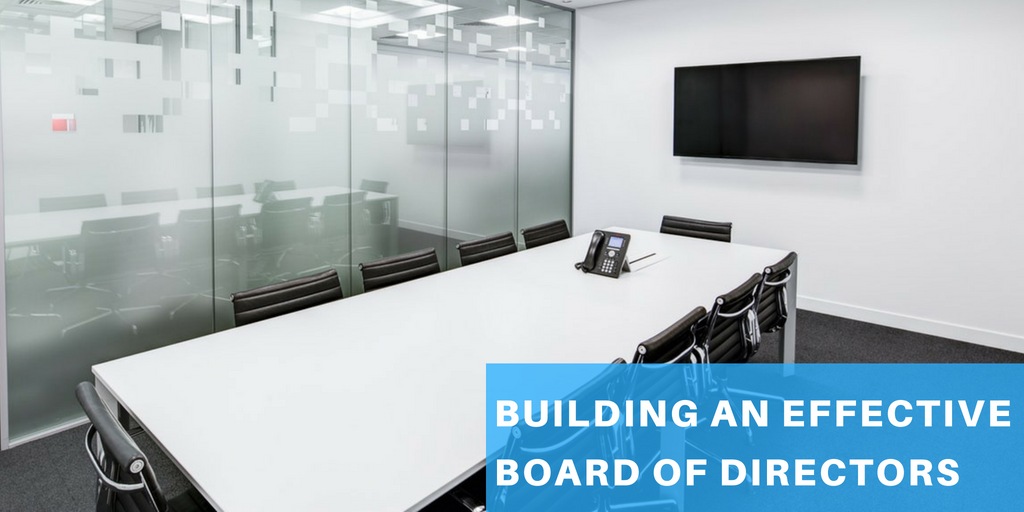Most people do not know what to do while assembling the board of directors. Forming an effective board of directors is essential because behind the CEO of the company are the board of directors. Many boards are inadequately organized with an imbalanced combination of members. Having a good board helps the CEO because behind every successful CEO is a strong, experienced and well-enhanced board that guides him correctly.
Assembling a board is extremely tough, but getting it done correctly is crucial, as it signifies that you are aiming for success at the start of your business and preparing for the best path. This elevates the chances of a successful startup, the long-term needs of the growing business are also met if done so properly.
Here are eight steps that guide you on how to build an effective board of directors:

1. Look beyond your investors
Having an investor syndication does not balance your board’s composition. Filling up the board with investors will not help, so avoid giving seats to all your investors. This is one common mistake done by a majority of startups as the investors ask for board representation to look after their own interests and plans.
Your board should be able to represent the current phases of the business, the strategic phases, and also the market easily. In quite a few cases, your investors are not suitable for the board. There are much more experienced personnel that fit right for the job. Without the experiences, expertise in global, operational or markets the investor may be a demerit to the board than merit.
Having inexperienced investors on the board will not just be a bad thing, but this may also affect the major decisions as they will look forward to their advantage and not the companies. Instead of adding value to the board they will lessen the value.
2. Look for a chairperson who’s experienced
To be on track from the beginning look for someone who has been in the chair of the board before and has the experience as it will be very beneficial for you and the company. Having him will help cross through cases that you or the rest of the board might be inexperienced as his experience will be your best weapon and treasury.
Look for someone who has 5-10 years of experience of being a board member and can be able to take care of the interests of the stakeholders internally and externally (employees, investors, board members, bankers, regulators, lobbyists, analysts, policymakers) with his skills and confidence.
Find someone who is not only the chairman of the board but also the coach of the CEO, someone who is able to guide, mentor, suggest corrective actions and works towards the success of the company. A person who can encourage and augment the team of management to perform better. Having someone who guides you is essential. The chairman and the CEO should not be the same person as it is more confusing.
3. Be transparent and keep communication channels open
Be a CEO who is confident and upfront with the board members. Keep regular meetings and dialogue with the board, as if you are consistent and clear to them, they will be able to help you out more.
This will make sure that your members of the board are not blindfolded and not left out/demoted. This also applies to when you are considering to get new candidates in the board as they all will help you decide the most capable one to join.
Being open to the board members do not only help you as the CEO to grow but also helps the company as the decisions and the actions taken will be backed by experience and thorough discussions, which will be in the best interests of the business. Building an effective Board of directors is made easier when they are clear about your goals, perspective, and intentions.
4. Keep an appropriate board size
While Building an effective board of directors one fact to be considered is the board size. Board sizes depend from company to company, some company needs up to 15 members and for some four are more than enough. Having too many board members will cause collisions in interest and having to less will lead to fewer thought decisions.
Keep the number of board members as low as possible (not too low) as it will have unity and discipline. The board members should be committed and together in decision making as this will display unity and a strong board which will be beneficial for the CEO and the company.
Eight Steps that Guide You on How to Build an Effective Board of Directors - Infographic Click To Tweet5. Look Ahead
Your board should have the perfect mixture of abilities, experience, and skills. While choosing the members, keep in mind that this is not only for now. This is for the long run as well, and they will be there in the future to support you when the company is growing till its last point, so choose wisely who you want in the board of directors as this decision goes a long way for the company.
This will help in building an effective board of directors. They will be the ones to shape your path to success by guiding and mentoring you till your success. Also, keep in mind that you are going to work with each person for 5 to 7 years. So make long-term decisions that you won’t regret.
6. Avoid those who are seeking the seats
It is advised to avoid the people who are seeking to be in the board as they have their own goals. They usually focus on their goals and not the company’s goals, this is one factor that will lead to a huge loss in the future. The best person for the seat is someone who you have to convince to be there as they are not looking for their own benefits.
This will help you in the long run as these people are not the types that come for their own benefit, and then just leave after getting what they want. The extra effort will help you in building an effective board of directors.
7. Be clear and direct with the board

Work does not end by just putting the board together. You have to be direct and tell them about your expectations. After setting up the board set regular meetings, functions to keep them involved. Transparency is essential and so is communication. The more you are transparent to them the more they will trust you and work towards the companies goals with commitment.
Cultivate your relationships with them, meet out of the boardroom also. Set up occasional meetings, informal dinners, and board games out of the office to get to know them personally as it helps generate trust.
8. Meetings should be made meaningful
Board meetings are considered to drag and boring. Some people also compare them to dentist visits. The CEO is generally responsible for how the meetings go. The CEO needs to have pre-meeting preparation. There should be adequate information to be discussed on and the board members should be told what the discussion is going to be about so that they can also prepare for the discussion with their own facts.
Make the meetings interesting, so that the members are actively willingly participating and not bored. They shouldn’t just say for the sake of saying, they should be participating with the enthusiasm. If they are happy being there, then they will also perform better. In order to build an effective board of directors, you have to keep them engaged and happy.
Conclusion
Building an Effective board of directors requires transparency, clarity, patience, and communication. The trust that you build within your board will help you in the tough times. With the perfect mixture of members, you will succeed in acquiring your goals.
So, build a board of directors that is experienced and skilled and perfect for your company to and your road to success will be made easier. And if you have not yet registered your company, head over to IncParadise and have your company registered and incorporated within no time!





